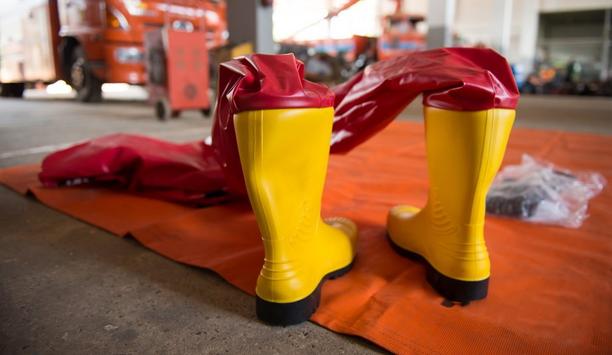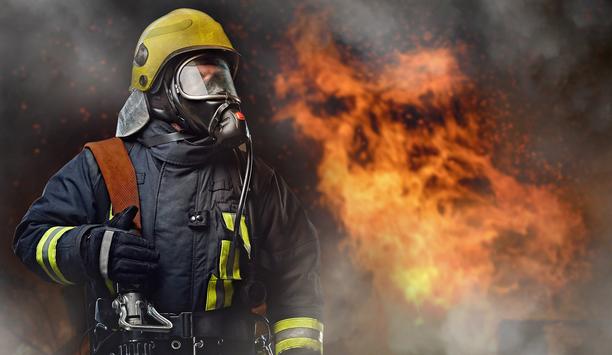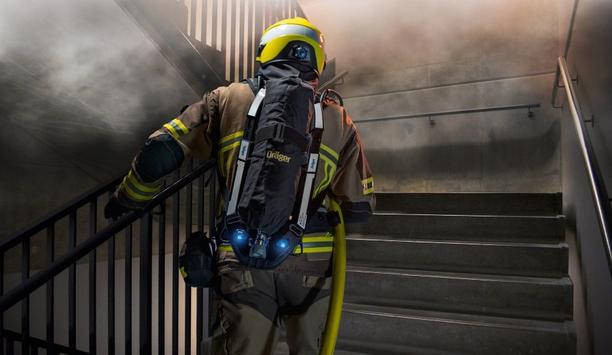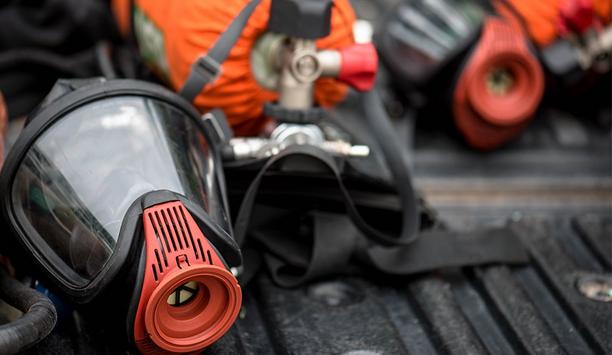At the trade fair Interschutz, Rosenbauer will present a solution for simply and efficiently combating the spread of easily communicable infectious diseases in high-traffic sites and public hotspots. The COVID-19 pandemic has dramatically demonstrated one thing.
Wherever a lot of people gather, germs always have an opportunity to thrive: at airports, train stations, trade fairs, hotels, stadiums, hospitals, or shopping malls. With the Rosenbauer RPS AeroGate disinfection bridge, which reliably makes surfaces germ-free, the risk of infection in hotspots can be significantly reduced, and hygiene in public spaces can be sustainably improved.
Germ-Free environment
The most common form of transmission of viruses such as the flu or SARS-CoV-2 is through droplet infection. The germs reach the mucous membranes in the nose and throat area via the respiratory tract and further into the body.
The most common form of transmission of viruses such as the flu or SARS-CoV-2 is through droplet infection
In the case of contact or smear infection, the pathogens are passed on by touching contaminated surfaces (skin, hair or clothing, and objects such as door handles, fittings, etc.). This is precisely where the Rosenbauer RPS AeroGate disinfection bridge comes in. It creates a germ-free environment inside a glass cube across a five-meter length, which gives pathogens no opportunity to take hold, and reliably deactivates them when passing through. This is how users can protect both themselves and their surroundings.
Increased humidity level
Viruses and bacteria are protected by a shell. Put simply, this consists of a lipid membrane (fat layer) and the proteins it contains. If the shell is broken, the ribonucleic acid (RNA) of viruses and the cell nuclei of bacteria are exposed, meaning that the pathogens become inactive and can no longer cause harm. In a similar way to washing hands with soap and water, the air in the AeroGate disinfection bridge, which is enriched with a biological agent, breaks down the lipid layer and makes it impossible for germs to survive on surfaces.
The sanitation liquid is atomized so finely by high-pressure frequency nozzles that the air volume in the AeroGate is evenly and completely filled. The sanitation liquid penetrates even the smallest cracks. Due to the fine atomization, users feel practically nothing of the disinfection process upon entering the AeroGate, except perhaps a slightly increased humidity level.
Highly effective technology
Rosenbauer expressly points out that users are not sprayed directly in the process
Rosenbauer expressly points out that users are not sprayed directly in the process. The effectiveness of the aerosol used for the RPS AeroGate has already been confirmed by specialist institutes, and verification of its harmlessness to health is currently still in progress.
The RPS AeroGate disinfection bridge is versatile and flexible in its use, both as a mobile solution to be set up in tents at events and as a permanent installation for continuous use at airports, in shopping malls, and exhibition centers, hospitals, etc.
Up to 750 people can pass through the gate per hour, and it also provides unhindered access for wheelchair users thanks to a passage width of 120 cm and low-angled access ramps. In addition, the Rosenbauer disinfection bridge can be integrated into a network and is extremely easy to service due to the simplicity of the technology involved. With aerosol disinfection, it relies on a highly effective technology and is perfectly suited to complementing existing hygiene concepts.






